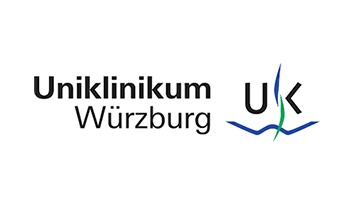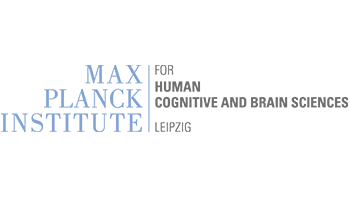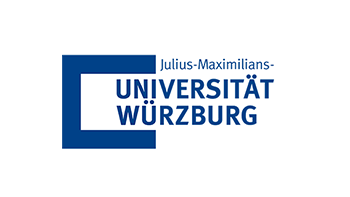Jun 16, 2025
ReTune Hackathon: Interview with Elisa Garulli
Elisa Garulli shares insights on the ReTune Hackathon 2025, highlighting AI trends, collaborative coding, and the power of focused, community-driven research
In the ReTune consortium, innovation doesn’t just happen in the lab – it often begins with spontaneous ideas, shared code, and collaborative problem-solving. That spirit comes alive at the ReTune Hackathon, an initiative that brings together researchers from across disciplines to tackle technical challenges and a spectrum of scientific coding problems. This year’s edition featured three main projects: building a graphical user interface (GUI) for parsing movement data, improving the widely used Perceive toolbox to benefit multiple research groups and comparing machine learning models to investigate the neural correlates of a behavioural task.
During the Retune Hackathon, the participants choose a team and work on a specific project for two to three days. The projects are selected to address software problems shared across multiple domains within the Collaborative Research Center (CRC) ReTune. This collaborative synergy aims to foster effective troubleshooting and set the stage for further collaborative initiatives.
We spoke with Elisa Garulli, who initiated and organized the ReTune Hackathon together with Juliette Vivien, Öykü Okur and Marlen Hesse about this year’s edition, held in Weimar from 2.6. to 4.6.2025, and what makes this community-driven event so special.
Ms. Garulli, the ReTune Hackathon has become a well-established part of ReTune’s collaborative culture. What was the core idea behind this year’s edition and how has the format evolved compared to previous years?
The idea behind the ReTune Hackathon has always been to create a protected space for deep, uninterrupted work on complex coding problems – something that’s hard to achieve in the day-to-day academic routine. Often, researchers face problems that are too big to solve alone or they simply don’t have the time or mental bandwidth to fully immerse themselves in these challenges due to emails, meetings, and other obligations. The Hackathon offers a rare opportunity to focus completely, let creativity flow, and think outside the box.
Unlike other hackathons, we don’t define a specific theme each year. ReTune already provides a common foundation: we all work on motor recovery in neurological diseases such as Parkinson’s or dyskinesia. This shared focus naturally guides the projects.
Over the years, the format has evolved. After the first edition, we introduced a bootcamp and a keynote speaker in the second edition and repeated that this year. I’m especially happy that ReTune supported the bootcamp again, as it’s a long-term investment in the community. Many participants come from different disciplinary backgrounds and may not have programming experience, yet they want to analyze their own data. The bootcamp helps bridge that gap.
This year, we collaborated again with iBOTS, a training and consulting platform, that links researchers to open-source technologies and free solutions and that offers tailored neuroscience workshops. So instead of a generic course, participants got hands-on experience with real neuroscience datasets.
We also invited Steffen Schneider, PhD, who is a group leader at Helmholtz Munich and also co-founder of KI Macht Schule and Kinematik AI. He works on explainable AI and neural embeddings and gave a keynote speech. And thanks to a generous contribution from Dr. Mike X. Cohen, educator and neuroscientist, participants also received lifetime access to his Udemy course on signal processing. It’s a valuable addition: while the Hackathon is intense and fast-paced, the course offers a way to revisit theory at any time.
Which challenges or topics took center stage this time? Were there particular scientific questions or tools that sparked especially intense collaboration?
AI was without question the dominant theme this year. It influenced both the bootcamp and the hackathon itself in different but meaningful ways.
From the bootcamp perspective, I noticed how the landscape had changed. Since our last edition in 2023, tools like ChatGPT have become significantly more powerful and widely used. For many early-career researchers, this has changed how they approach coding. With the help of AI, they can now build fairly complex systems quickly. But there’s a trade-off: if something goes wrong, it’s often hard to fix without a solid foundation.
During the hackathon, the more advanced teams also engaged with AI, especially in machine learning and data annotation. One project focused on annotating large datasets for future use in ML applications, while another involved classifying tasks using a smaller dataset. It was more of a sandbox to train ourselves in applying machine learning methods. We even explored explainable AI, trying to understand not just what the models predicted, but why.
This tied in beautifully with Steffen Schneider’s keynote on explainable AI, especially his work on neural embeddings for both brain and behavioral data. In neuroscience, we often want to understand what drives a system’s output, and his work aims to unpack these “black box” models and connect them to actual neural processes. That intersection between AI and explainability was a major highlight for me.
On a personal note: What are your key takeaways from this year’s Hackathon and how do you see the format contributing to the future of ReTune and neuromodulation research more broadly?
Reflecting on this year’s Hackathon – and also knowing it was the last one I organized – I’ve come to see how crucial project selection is. When a team has a clear, shared goal, people engage more deeply. They divide tasks, build on each other’s work, and often push through to meaningful results, even staying up late to code. In contrast, broader, loosely defined projects can be harder to connect with, as participants end up working more independently, and that collaborative spark gets lost.
That’s something I’d recommend to future organizers: have a preparation meeting where projects are clearly defined and goals are aligned.
Despite some challenges, the interest remains high. We offer 20 spots each year and they’re always filled. Whether it’s through the bootcamp or the hackathon, participants see real value in this format.
To me, the Hackathon plays two important roles: sharpening programming skills and building collaboration. It’s one thing to say, “We should collaborate,” and quite another to actually sit together for three days, realize someone has a dataset you need, or expertise you didn’t know you were missing. That’s where the real synergy happens.
Thank you very much for the interview.
© Picture: SFB ReTune











